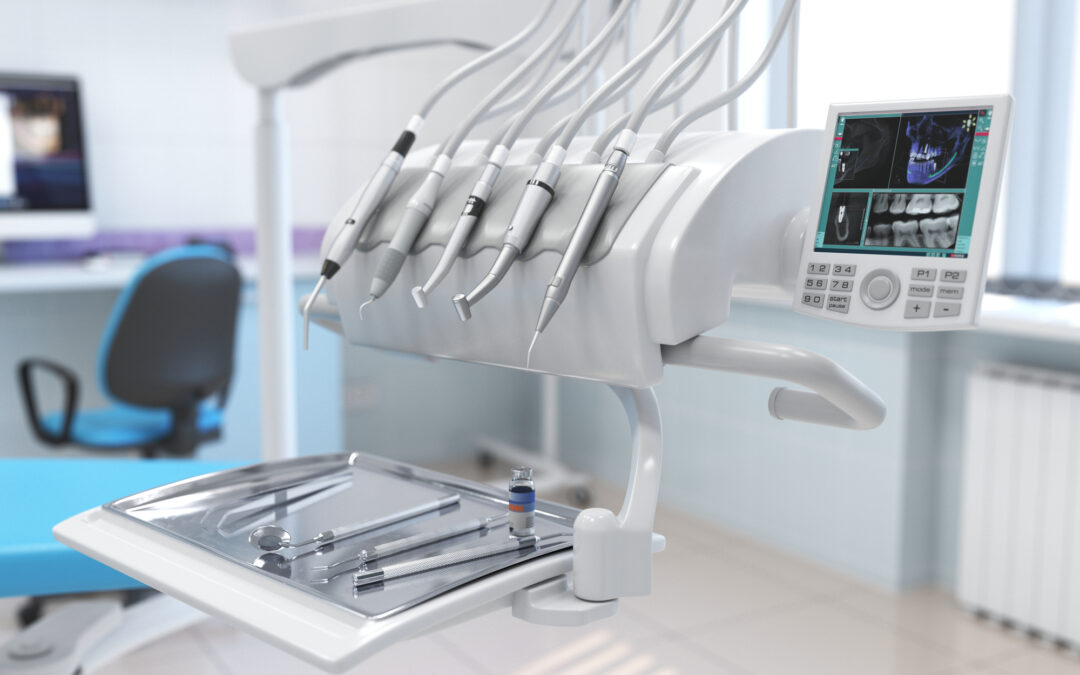Automation is transforming various industries, and dentistry is no exception. In 2025, dental practices and laboratories are leveraging cutting-edge technologies to enhance efficiency, improve patient care, and streamline workflows. From AI-driven diagnostics to robotic-assisted procedures, automation is redefining how dental professionals operate. This technological shift is particularly evident in areas such as dental implants and dental marketing, where innovation is revolutionizing traditional processes.
AI-Powered Diagnostics and Treatment Planning
Artificial intelligence (AI) has become a game-changer in dental diagnostics. Advanced AI algorithms analyze dental scans, X-rays, and patient histories to detect potential oral health issues with remarkable accuracy. These automated diagnostic tools assist dentists in identifying cavities, gum disease, and even early signs of oral cancer. AI-driven software also enhances treatment planning, ensuring more precise procedures, particularly in complex cases like dental implants.
With automation, dentists can now provide patients with highly personalized treatment plans. AI-generated models simulate different treatment scenarios, helping patients make informed decisions about their oral health. This automation reduces errors, shortens consultation times, and ultimately leads to better patient outcomes.
Robotic-Assisted Dental Procedures
Robotic technology is making significant strides in dental practices, especially in surgical procedures. In 2025, robotic-assisted surgery is being widely used for placing dental implants with unparalleled precision. These robotic systems, guided by AI and real-time imaging, minimize human error and optimize implant positioning. This results in shorter recovery times and higher success rates for patients.
Additionally, robotic automation in restorative dentistry allows for quicker and more accurate crown placements. With the help of robotic arms, dentists can ensure consistent results, reducing the need for adjustments and remakes. Such automation not only enhances efficiency but also improves patient satisfaction by minimizing discomfort and shortening appointment durations.
3D Printing and Dental Laboratories
The adoption of 3D printing technology has revolutionized dental laboratories. In 2025, automated 3D printing systems are producing custom dental restorations, including crowns, bridges, dentures, and dental implants, with unmatched precision. These printers use high-quality biocompatible materials to create durable and aesthetically pleasing restorations tailored to individual patient needs.
By integrating automation into dental labs, technicians can fabricate restorations faster and more accurately than ever before. This technology also reduces costs, making dental treatments more affordable for patients. Furthermore, 3D printing eliminates the need for traditional impression-taking methods, replacing them with digital scans that enhance both comfort and accuracy.
AI and Automation in Dental Marketing
Automation is not only transforming clinical aspects of dentistry but also playing a crucial role in dental marketing. In 2025, AI-powered tools are helping dental practices attract and retain patients more effectively. Automated marketing platforms analyze patient data, track engagement, and generate personalized content to target potential clients.
For instance, AI-driven chatbots handle appointment scheduling, answer common patient inquiries, and provide follow-up reminders. These automated systems improve patient communication and free up staff to focus on more complex tasks. Additionally, AI-powered analytics help dental practices refine their marketing strategies by identifying trends and predicting patient needs.
Social media automation tools are also enhancing dental marketing efforts. Dentists can schedule posts, respond to patient reviews, and analyze campaign performance with minimal manual effort. This allows for a more strategic approach to online engagement, ultimately leading to increased patient trust and loyalty.
Enhancing Patient Experience with Smart Technology
Automation is improving the overall patient experience by making dental visits more convenient and comfortable. Smart scheduling systems use AI to optimize appointment bookings, reducing wait times and ensuring efficient practice management. Automated reminders and follow-ups keep patients informed about their treatment schedules, minimizing missed appointments.
Furthermore, virtual reality (VR) and augmented reality (AR) technologies are being integrated into dental practices to enhance patient education and alleviate anxiety. Patients can visualize their treatment outcomes through AR simulations, while VR-based relaxation techniques help reduce stress during procedures.
The Future of Automated Dentistry
As automation continues to advance, the dental industry will witness even greater transformations. The integration of AI, robotics, and 3D printing will further streamline dental procedures, making them more precise and accessible. Additionally, automated dental marketing tools will continue to enhance patient outreach and engagement, helping practices grow in an increasingly competitive landscape.
However, the widespread adoption of automation also raises challenges, including the need for continuous training and adaptation among dental professionals. Ethical considerations surrounding AI-driven diagnostics and data privacy must also be addressed to ensure patient trust and compliance with industry regulations.
Despite these challenges, the benefits of automation in dentistry are undeniable. By embracing these technological advancements, dental practices and laboratories can provide higher-quality care, improve efficiency, and ultimately enhance the patient experience. As we move further into 2025, automation will remain at the forefront of dental innovation, shaping the future of oral healthcare for years to come.

